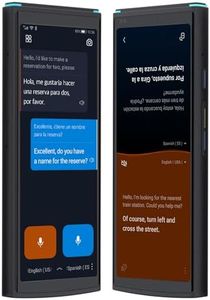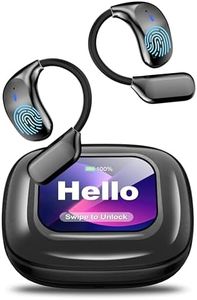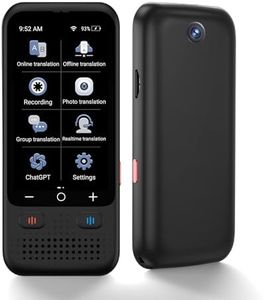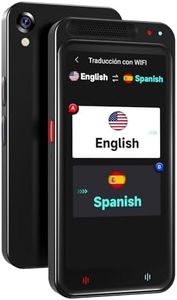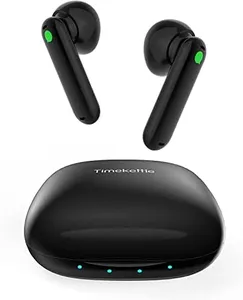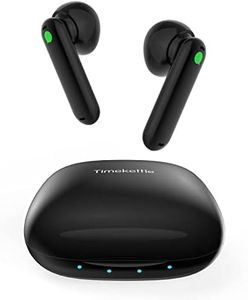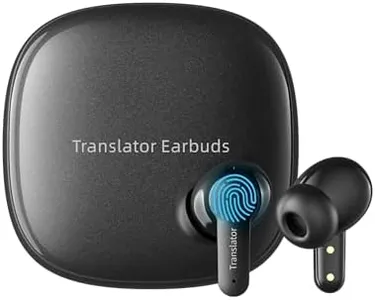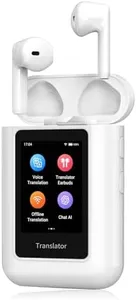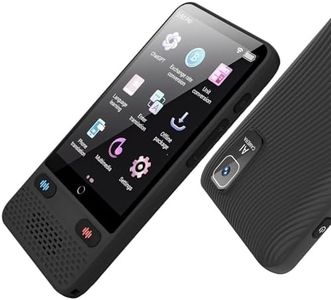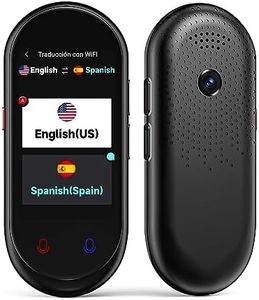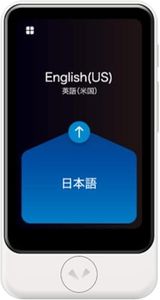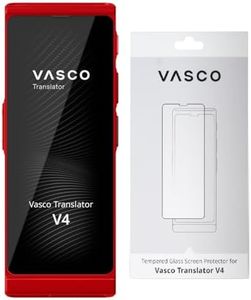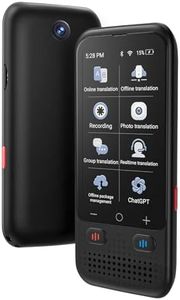10 Best Translator Devices 2025 in the United States
Our technology thoroughly searches through the online shopping world, reviewing hundreds of sites. We then process and analyze this information, updating in real-time to bring you the latest top-rated products. This way, you always get the best and most current options available.

Our Top Picks
Winner
iFLYTEK Language Translator Device, Face-to-Face Bidirection Simultaneous Translation, 60 Languages and 18 Offline Packs, 2-Year Global Data, Instant Voice Translator for Travel, Learning, Business
Most important from
122 reviews
The iFLYTEK Language Translator Device stands out in the translator-device category, particularly for travelers, students, and business professionals who require effective communication across language barriers. One of its notable strengths is its translation accuracy, boasting a 98% success rate and a quick 0.5-second response time. This makes it an excellent choice for real-time interactions, especially with its face-to-face simultaneous translation feature that supports 19 common languages.
Additionally, the device's offline capabilities enhance its usability in areas without reliable internet access, offering 18 offline language packs. This is particularly beneficial for travelers who may not always have a Wi-Fi connection. The long battery life, providing up to 6 hours of continuous use and 10 days on standby, makes it convenient for extended outings.
Ease of use is another strong point, with a 5-inch high-definition touch screen and both touch and physical buttons, making it accessible for users of all ages. The inclusion of photo translation for menus and signs broadens its applicability beyond just voice translation. However, there are some drawbacks to consider. While it supports 60 online languages, the offline packs require an initial Wi-Fi connection for downloading, which might not be ideal for all users. Additionally, while the device is portable, its size, though compact, may still be a consideration for users seeking ultra-light alternatives. Lastly, the promise of a 2-year global data coverage is a great feature, but users should ensure they have a clear understanding of its limitations in specific countries or regions. The focus on user privacy is commendable, but users should always be cautious about sharing sensitive information.
Most important from
122 reviews
AI Language Translation Earbuds, LCD Touch Screen OWS Real-Time Translator for 144 Languages & Accents Headphones Translator Ideal for Travel Business Learning Translation Device Earphones(Black)
Most important from
98 reviews
The AI Language Translation Earbuds offer extensive language support with real-time translation for up to 144 languages and accents, making them highly versatile for travelers, business professionals, and language learners. Their advanced AI technology and natural language processing system provide accurate and efficient translation with minimal delay, even in noisy environments, thanks to dual-microphone noise cancellation. This ensures clear communication in various situations.
The device is user-friendly, featuring a smart touch control system with a color touchscreen for intuitive navigation and personalization options like wallpaper changes and camera control. The Hi-Fi sound performance, powered by 14.2mm fiber drivers and customizable EQ modes, ensures high-quality audio for both music and calls, enhancing the user's experience.
These earbuds are compatible with both iOS and Android devices and offer easy setup via QR code activation. Their ergonomic design promises comfort for extended use. The AI Language Translation Earbuds stand out in their category, especially for those seeking reliable and versatile translation capabilities in a compact and portable form.
Most important from
98 reviews
Language Translator Device, Upgraded ChatGpt AI Translator No WiFi Needed, 138 Languages Two Way Real-Time Voice Translation, Offline&Recording&Photo Translation for Travel Business Learning
Most important from
26 reviews
The Language Translator Device stands out with its impressive language support, covering 138 languages for real-time voice translation, making it ideal for travelers, business people, and learners who engage with diverse languages regularly. Its translation accuracy claims to be 98%, and with a quick response time of 0.5 seconds, it should be reliable for fast-paced conversations. The device operates without needing WiFi, offering offline translation in 17 languages, making it convenient for use in areas with limited internet access. The inclusion of ChatGPT for smart assistance and functions like currency exchange and unit conversion further enhances its usefulness in both travel and business contexts.
Ease of use is a key feature, with a 3-inch high-definition touch screen alongside physical buttons, ensuring that users of varying ages can operate it comfortably. Portability is another strength, as it is lightweight (approximately 100 grams) and compact enough to fit in pockets and backpacks. The rechargeable lithium-ion battery included should provide adequate power for extended usage.
Additional features such as HD photo translation using an 8 million-pixel camera with OCR technology enable translations of images like menus and signposts in up to 74 languages, enhancing its versatility across different scenarios. While it excels in many areas, potential buyers may wish to consider how frequently they rely on offline translation capabilities, as relying heavily on this feature could be a limitation if traveling outside the supported languages. This device ranks well within its category of electronic foreign language translators, indicating a positive reception despite being relatively new to the market.
Most important from
26 reviews
Buying Guide for the Best Translator Devices
Choosing the right translator device can significantly enhance your travel experience, business meetings, or any situation where language barriers might be an issue. When selecting a translator device, it's important to consider several key specifications to ensure it meets your needs. Here are the most important specs to look at and how to navigate them.FAQ
Most Popular Categories Right Now


